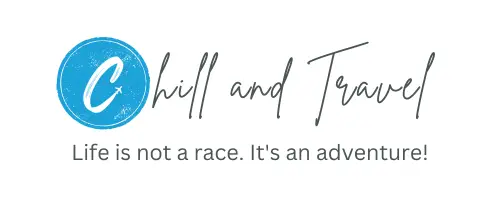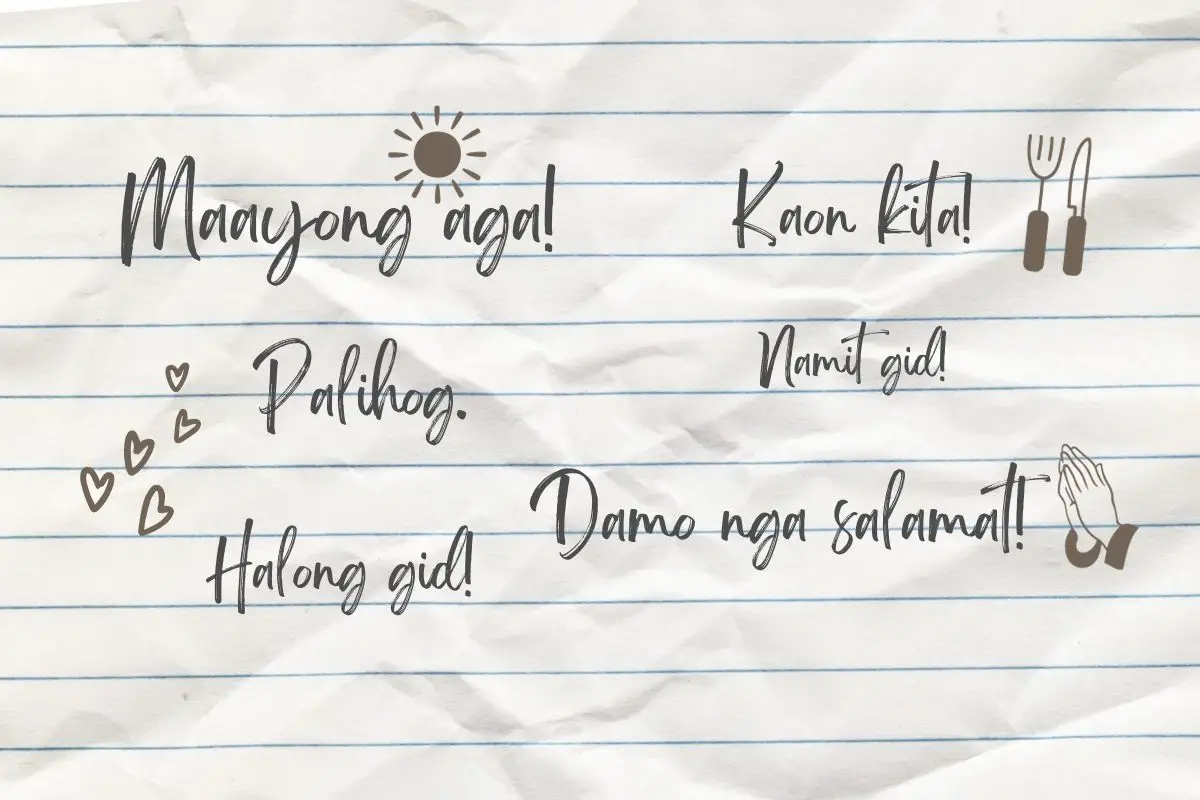50 Useful Hiligaynon Words & Phrases to Learn for Travelers
Traveling to Iloilo, Bacolod, or other parts of the Western Visayas region soon? It pays to learn some useful Hiligaynon words and phrases so you can engage more with the locals. Although they can also communicate in Filipino and English, we’re sure they’ll appreciate it if you try to interact with them in their local language.
While Ilonggo and Hiligaynon are often used interchangeably, you should know that Hiligaynon is a major Visayan language used in Western Visayas while Ilonggo is the group of people who mainly inhabit Iloilo, Guimaras, and Panay. The Ilonggos, Negrenses, and Capiznons can mostly understand and speak Hiligaynon.
|
Tip: Immerse in Iloilo City’s rich culture and heritage with this Iloilo City Heritage Tour. Be sure to use your Hiligaynon language skills as you interact with the locals. |
As Cebuanos ourselves, we can say that Hiligaynon is closely similar to Bisaya with some Tagalog combinations. You’ll notice that, too, after mastering these basic Hiligaynon words and phrases. Now, let’s begin!
Basic Hiligaynon words and phrases for greetings and introductions


1. “Maayong adlaw!” = “Good day!”
Same with Cebuano or Bisaya language, you say “Maayong adlaw!” to greet “Good day!” in Hiligaynon. For specific times of the day, you may use:
- Maayong aga – Good morning
- Maayong ugto – Good noon
- Maayong hapon – Good afternoon
- Maayong gab-i – Good evening
2. “Kamusta?” = “How are you?”
You say this Hiligaynon word to know how the person is doing.
3. “Maayo man.” = “I’m fine.”
This is your response to #2 if you are alright or really fine.
4. “Ano imo ngalan?” = “What’s your name?”
Use this Hiligaynon phrase if you want to know someone’s name.
5. “Ang ngalan ko ay si <name>.” = “My name is <name>.”
When you tell your name, you can say, “Ang ngalan ko ay si Juan.”
6. “Taga di-in ka?” = “Where are you from?”
Use this Hiligaynon phrase if you want to know where the person is from, which you can answer like this, “Taga-Cebu ako!”. You may also use the variations “Di-in ka gaistar?” for “Where do you live?” and “Di-in ka halin?” for “Where did you come from?”.
7. “Kabalo ka mag-hambal <language>?” = “Do you speak <language>?”
When you ask if someone knows how to speak a certain language, use this Hiligaynon phrase. For example, “Kabalo ka mag-hambal Bisaya?” (Do you speak Bisaya?).
8. “Indi ko ka-intiende.” = “I don’t understand.”
You can use this Hiligaynon sentence to answer the previous question, especially if you really don’t understand anything.
9. “Am-bot!” = “I don’t know!”
You can also reply like this if you don’t know the answer.
Useful Hiligaynon words and phrases for social etiquette


10. “Salamat!” = “Thank you!”
You can also add “damo” as in “Damo nga salamat!” for “Thank you very much!”. You may also use “Salamat gid!” for more emphasis.
11. “Wala sang anuman!” = “You’re welcome!”
This is your reply to someone who says thank you to you. If you want to make it shorter, you may also use “Wala man!”.
12. “Palihog” = “Please”
Say this Hiligaynon word if you want to ask a favor from someone.
13. “Pasensyaha lang ko!” = “I’m sorry!”
Use this Hiligaynon or Ilonggo phrase to apologize.
14. “Halong gid!” = “Take care!”
“Halong” already means “take care” in Hiligaynon, but you add “gid” for emphasis.
15. “Asta sa liwat!” = “Until next time!”
You say this if you look forward to seeing the person again next time.
16. “Hu-o” = “Yes”
If you agree or affirm something, use this Hiligaynon word.
17. “Indi” = “No”
Use this Hiligaynon word to say no.
18. “Bulig!” = “Help!”
Don’t hesitate to utter this if you need help.
Practical Hiligaynon words and phrases for travel


19. “Diin?” = “Where?”
“Diin” means where so you use it to ask the location of a place or establishment as in “Diin ang kasilyas? (Where is the toilet?).
20. “Diin ka makadto?” = “Where are you going?”
Use this Hiligaynon phrase if if you want to know where the person is heading to.
21. “Paano magkadto sa <place>?” = “How to go to <place>?”
Say this when asking for directions on how to go to a particular place.
22. “Mapuli ko anay.” = “I’ll go home.”
When you want to go home, just say this Hiligaynon phrase.
23. “Lakat ko anay.” = “I’ll get going.”
And if you want to get going, say this instead.
24. “Diin ang jeep/bus nga ni ga pakadto?” = “Where does this jeepney/bus go?
Use this phrase if you want to know where the public transport like jeepney or bus is heading to.
25. “Tag pila ang plete pakadto <place>? = “How much is the fare going <place>?”
If you want to know how much the fare is going to a particular destination, you may use this Hiligaynon phrase.
26. “Pila ka oras ang biyahe pakadto <place>? = “How many hours is the trip to <place>?”
To know how many hours or how long the trip will take, use this Hiligaynon phrase.
27. “Ihatod ko sa <destination>.”= “Please bring me to <destination>.”
You may use this phrase when telling the driver your destination, especially when riding a taxi or tricycle.
28. “Lugar lang!” = “Pull over!”
This is what you say when you have already reached your destination and you want the jeepney or bus to stop so you can go down.
Handy Hiligaynon / Ilonggo words and phrases for shopping


29. “May ara kamo <item>?” = “Do you have <item>?”
Use this Hiligaynon sentence when asking if the store has the item you are looking for.
30. “May ara.” = Yes, we have.”
You can reply “May ara” to say yes or confirm that you have something the person is looking for.
31. “Wala / Wa-ay.” = No, we don’t have.”
On the other hand, you use this to say no or nothing.
32. “Tagpila ini / ina?” = “How much is this / that?”
If you want to buy something and would like to know the price, say this Hiligaynon / Ilonggo phrase.
33. “Kamahal!” = “It’s so expensive!”
If you already know that price and it’s quite expensive, you can utter this Hiligaynon phrase, but make sure you don’t shout at the vendor.
34. “Barato!” = “It’s cheap!”
If you find it cheap or affordable, you can say this word.
35. “Wala tawad?” = “No discount?”
Use this phrase if you want to haggle or get a discount.
36. “Pila ka damo?” = “How many?”
If you want to know the count or the number of items, you can say this phrase. Another variation would be “Pila ka bi-log?” for “How many pieces?”.
37. “Indi ko na gusto.” = “I do not want it.”
Say this phrase if you dislike something or don’t want it.
38. “Kinahanglan ko sang <thing>.” = “I need <thing>.”
If you need something, just say this Hiligaynon phrase. For instance, “Kinahanglan ko sang tubig.” (I need water.).
39. “Ano oras mabukas?” = “When is the opening time?”
Ask this if you want to know the opening time of the store or establishment.
40. “Ano oras gasara?” = “When is the closing time?”
When you want to know the closing time of the store or establishment, you can use this phrase.
Useful Hiligaynon phrases for dining or eating


41. “Kaon kita!” = “Let’s eat!”
Say this Hiligaynon phrase when inviting people to eat. You can also say, “Kaon ‘ta!” to make it more casual.
42. “Ka kaon ka na?” = “Have you already eaten?”
If you want to know if the person has already eaten, ask him or her this.
43. “Gutom ako!” = “I’m hungry!”
Say this when you’re hungry but not #hangry, okay?
44. “Gutom ako!” = “I’m hungry!”
Say this when you’re hungry but not #hangry, okay?
45. “Gusto ko magkaon.” = “I want to eat.”
Go ahead and say this Hiligaynon phrase if you already want to eat.
46. “Indi ko gusto magkaon.” = “I do not want to eat.”
On the other hand, if you don’t want to eat, just say this.
47. “Diin mo gusto magkaon?” = “Where do you want to eat?”
Use this Hiligaynon sentence to ask the person where he or she wants to eat.
48. “Manamit!” = “Delicious!”
If the food is delicious, you utter this Hiligaynon word. You can also use “Namit gid!” for more emphasis.
49. “Busog na ako!” = “I’m already full!”
If you’re already full, you can say this Ilonggo phrase.
50. “Palihog ang bayad.” = “The bill please.”
Say this when asking for the bill.
These are just some of the basic and useful Hiligaynon words and phrases you can learn to explore Western Visayas like a true local.
After Western Visayas, why not explore Eastern Visayas, too? Be sure to learn some basic Waray words and phrases before you get there. If you’re going to Zamboanga City, you may be interested to learn Chavacano. If you’re traveling to Ilocos, familiarize yourself with these Ilocano words and phrases. And if you’re exploring Bicol region, learn some useful Bicolano words and phrases.
Do you have more Hiligaynon words and phrases to add? Feel free to let us know on our social media channels: Facebook, Instagram, Twitter, and YouTube.
*Special thanks to Dr. Jackie A., an alumna of West Visayas State University who can speak Hiligaynon, for reviewing and verifying our Hiligaynon language translation.

